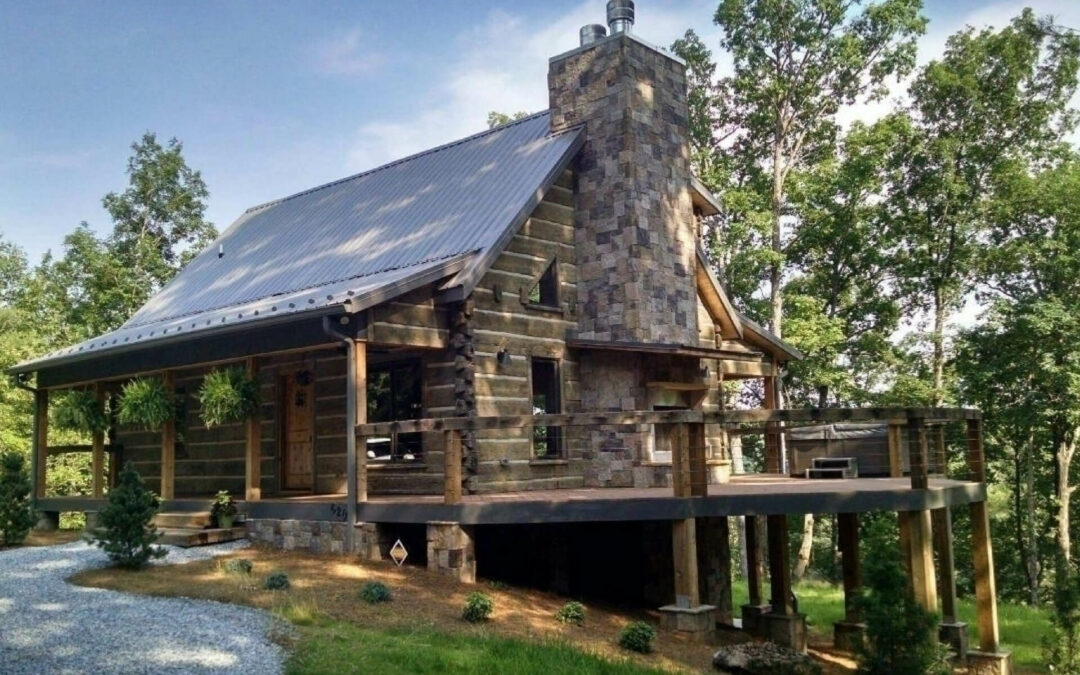Building a log cabin is a dream for many people. The rustic charm, cozy feel, and connection to nature make log cabins a popular choice for those seeking a retreat or a permanent residence. However, constructing a log cabin requires careful planning and consideration, especially when it comes to choosing the best building materials. In this article, we will explore the key factors to consider when selecting materials for your log cabin project.
Understanding the Basics of Log Cabin Construction
Before delving into the topic of log cabin building materials, let’s first understand the basics of log cabin construction. A log cabin is built using interlocking logs that form the walls of the structure. These logs are typically stacked horizontally, with each layer fitting into the grooves of the one below it. This construction method creates a sturdy and durable building.
But what makes log cabin construction truly fascinating is the rich history and cultural significance behind it. Log cabins have been a symbol of self-reliance and resilience for centuries. They were initially built by pioneers and settlers as a means of shelter in the wilderness. These humble structures served as a testament to the human spirit, as people braved the harsh elements to create a place they could call home.
When it comes to log cabins, the choice of materials is crucial. Not only do the materials affect the overall appearance of the cabin, but they also determine its strength, durability, and insulation properties. Let’s explore the importance of choosing the right materials in more detail.
The Importance of Choosing the Right Materials
Selecting the right materials for your log cabin is paramount to its long-term success. The materials you choose will impact the cabin’s structural integrity, energy efficiency, and overall aesthetic appeal. By choosing high-quality and appropriate materials, you can ensure the longevity, comfort, and beauty of your log cabin.
One of the key considerations when selecting materials is the type of wood used for the logs. Different types of wood have varying characteristics, such as strength, resistance to decay, and natural beauty. Popular choices include pine, cedar, and oak. Pine is known for its affordability and ease of construction, while cedar offers natural resistance to insects and rot. Oak, on the other hand, is prized for its exceptional strength and durability.
Key Components of a Log Cabin
When considering the best building materials for your log cabin, it is important to evaluate the key components of the structure. These components include the logs, insulation, roofing, windows, and doors.
The logs themselves are the backbone of the log cabin. The type of wood used plays a significant role in the cabin’s strength and appearance. While pine, cedar, and oak are popular choices, other woods like spruce and fir can also be suitable options depending on your specific needs and preferences.
Insulation is another crucial component of a log cabin. It helps regulate temperature and energy efficiency, ensuring a comfortable living environment throughout the year. There are various insulation options available, such as fiberglass, foam, and natural materials like sheep’s wool or recycled denim.
Roofing, windows, and doors are essential for protecting the cabin from the elements and providing security. These components should be chosen carefully to complement the overall design and functionality of the log cabin. Options range from traditional shingle roofs to metal roofs, and from classic wooden windows to energy-efficient double-glazed windows.
By carefully considering each of these key components and selecting the right materials, you can create a log cabin that not only stands the test of time but also reflects your personal style and values. So, whether you’re embarking on a rustic retreat or a permanent residence, understanding the basics of log cabin construction and making informed choices about materials will ensure a rewarding and fulfilling log cabin experience.
Exploring Different Types of Wood for Log Cabins
Choosing the right type of wood is crucial when it comes to log cabin construction. Different wood species offer varying levels of durability, strength, and resistance to elements. Let’s take a look at three popular choices:
Pine: A Popular Choice for Log Cabins
Pine is a widely used wood for log cabins due to its affordability and availability. It has a natural beauty, with its warm tones and distinct grain patterns. Pine is relatively soft compared to other wood types, making it easier to work with during construction. However, it requires proper sealing and maintenance to protect it from insects and decay.
Cedar: A Durable and Resistant Option
Cedar is a highly durable and resistant wood known for its natural resistance to decay and insects. It has a beautiful reddish-brown color and a pleasant aroma. Cedar is an excellent choice for log cabins located in areas with high humidity or damp conditions.
Oak: A Strong and Long-lasting Material
Oak is renowned for its strength and longevity. It is a dense and heavy wood that offers exceptional durability. Oak logs provide superior insulation properties and can withstand harsh weather conditions. While oak is more expensive compared to other wood species, its durability and timeless beauty make it a popular choice among log cabin enthusiasts.
The Role of Insulation in Log Cabins
Insulation is a critical factor to consider when building a log cabin. Proper insulation ensures energy efficiency and comfort regardless of the season. Inadequate insulation can result in excessive heating or cooling costs and discomfort. Let’s delve deeper into why insulation matters and the best insulation materials for log cabins.
Why Insulation Matters in Log Cabins
Log cabins may have a rustic appeal, but they require effective insulation to maintain a comfortable indoor environment. The thermal properties of logs alone are not sufficient to keep the cabin warm in winter or cool in summer. Insulation helps regulate temperature, reduce energy consumption, and prevent drafts or moisture issues.
Best Insulation Materials for Log Cabins
There are several insulation materials suitable for log cabins, including fiberglass, cellulose, and foam boards. Fiberglass insulation is a popular choice due to its affordability, ease of installation, and effectiveness in conserving energy. Cellulose insulation, made from recycled paper, provides excellent thermal performance and can be blown into hard-to-reach areas. Foam board insulation offers high R-values and is ideal for sealing gaps or insulating the roof or floor.
Selecting the Right Roofing Materials
The roof is an essential component of any log cabin, protecting it from the elements and providing structural integrity. When choosing roofing materials, durability, weather resistance, and aesthetics are key considerations. Let’s explore two common options.
Metal Roofing for Log Cabins
Metal roofing is a durable and long-lasting option for log cabins. It offers excellent resistance to fire, wind, and impact. Metal roofs can be made from various materials, including steel and aluminum, and are available in different styles and colors to suit your preferences.
Asphalt Shingles: A Cost-Effective Option
Asphalt shingles are a popular choice due to their affordability and versatility. They come in a wide range of colors and styles to complement any log cabin design. Proper installation and maintenance can ensure the longevity of asphalt shingles, making them a cost-effective roofing solution.
Windows and Doors: More Than Just Aesthetics
While windows and doors add beauty and character to a log cabin, their functionality and energy efficiency are equally important. Let’s explore two crucial aspects of windows and doors when it comes to log cabin construction.
Choosing the Right Windows for Your Log Cabin
Windows play a vital role in introducing natural light and ventilation into a log cabin. When selecting windows, consider their energy efficiency, insulation properties, and compatibility with the overall design. Double-glazed or triple-glazed windows provide better insulation, reducing heat loss or gain.
The Importance of Quality Doors in Log Cabins
Doors are not just entryways; they also contribute to the insulation and security of a log cabin. Solid wood doors provide excellent insulation and durability. Proper weather sealing and high-quality locks ensure energy efficiency and peace of mind.
In conclusion, choosing the best log cabin building materials is essential for a successful and enduring construction project. Consider the type of wood for the logs, insulation materials, roofing options, and the importance of well-designed windows and doors. By making informed choices and investing in quality materials, you can create a log cabin that not only showcases timeless beauty but also offers comfort, sustainability, and lasting value.
Discover the Smart Alternative with Smart Logs Of The Carolinas
Ready to build your dream log cabin with materials that blend traditional charm with modern innovation? Smart Logs of the Carolinas provides concrete logs that not only emulate the beauty of natural wood but also offer unparalleled durability and energy efficiency. Our logs are environmentally friendly, fire-resistant, and require low maintenance, ensuring your log cabin remains a sanctuary for years to come. Embrace the future of log cabin construction that’s cost-effective and kind to the planet. Contact Us! today to learn how Smart Logs of the Carolinas can make your log cabin dream a reality.

